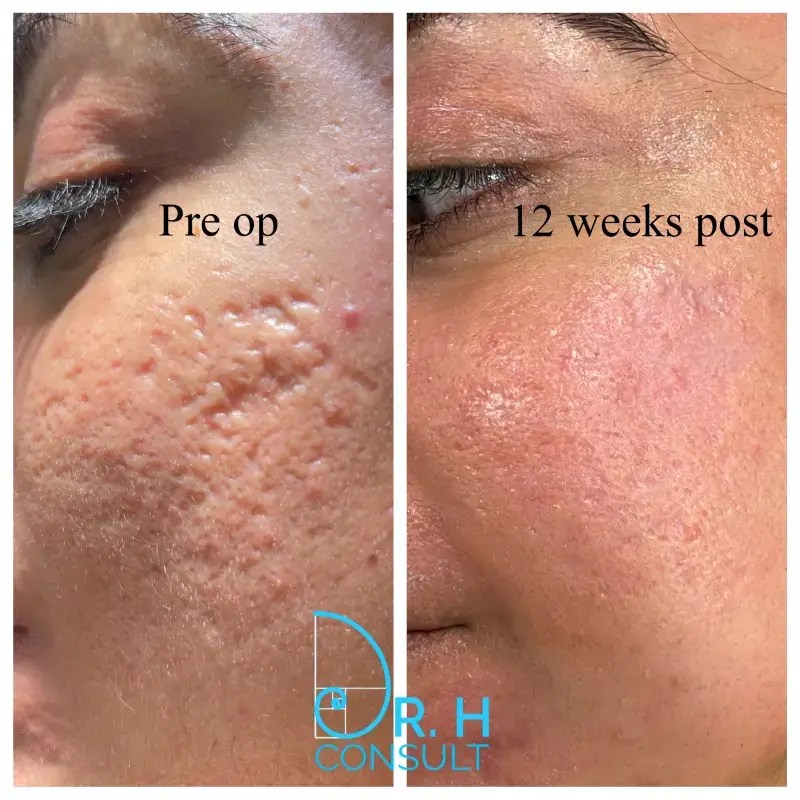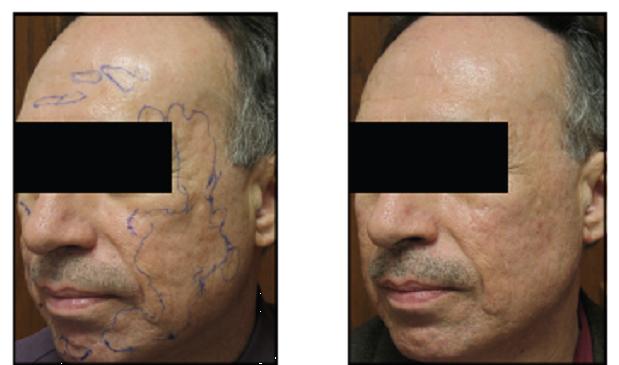Acne and Acne Scars Treatment: Professional Solutions for Lasting Outcomes
Acne and Acne Scars Treatment: Professional Solutions for Lasting Outcomes
Blog Article
Discovering Skin Disease: Determining and Dealing With Acne Scars for Healthier Skin
Acne marks represent a considerable concern for people seeking to maintain healthy and balanced skin, as they can influence both look and self-confidence. Comprehending the different types of scars, from atrophic to hypertrophic, is important for identifying proper treatment options.
Recognizing Acne Scars

The body's all-natural recovery process can cause either atrophic marks, which look like anxieties in the skin, or hypertrophic marks, which are raised and result from overflow of collagen. Additionally, the psychological toll of acne scars need to not be undervalued; numerous people report feelings of embarrassment, stress and anxiety, and decreased self-worth. This emotional burden can impact social communications and overall quality of life.
Resolving acne scars needs a thorough understanding of their development and effect. Awareness of the possibility for long-term consequences associated with neglected scars can inspire individuals to seek suitable treatments. Early treatment and reliable monitoring methods can dramatically boost skin appearance and enhance emotional durability, highlighting the relevance of understanding the complexities surrounding acne marks.
Kinds of Acne Scars
Acne marks can be classified right into distinctive types, each showing one-of-a-kind characteristics and calling for specific treatment strategies. acne scars treatment. The main kinds of acne scars consist of atrophic, hypertrophic, and keloid scars

Hypertrophic scars, in contrast, are increased above the skin level and are the outcome of extreme collagen production during the recovery process. They typically stay within the limits of the original acne sore. Keloid scars are comparable however extend beyond the initial injury site, creating bigger, elevated locations that can be excruciating or itchy.
Understanding these kinds of marks is essential for picking suitable treatment alternatives. Different marks might respond better to details therapies, such as laser treatments, fillers, or surgical interventions, stressing the relevance of a customized method to acne scar administration.
Recognizing Your Scars
Acne marks generally drop right into two classifications: hypertrophic and atrophic marks. These can further be identified into ice-pick marks, boxcar scars, and rolling scars, each displaying unique features and calling for different methods for evaluation.
Hypertrophic scars, on the other hand, are elevated and happen as a result of too much collagen production during the recovery procedure. Identifying the specific features of your scars-- such as width, structure, and depth-- is crucial for correct identification (acne and acne scars treatment). Furthermore, consider the circulation of scars across your skin, as this can indicate the seriousness and period of the acne problem
Engaging with a skin doctor can supply important insights right into the nature of your scars, aiding in the distinction in between different kinds. A detailed understanding of your scars will eventually result in a more tailored and efficient treatment plan, guaranteeing a clearer and much healthier skin.
Treatment Options Available
Recognizing the details kind of acne scars present on your skin lays the groundwork for exploring efficient therapy options. Common types of acne marks consist of atrophic (depressed), hypertrophic (increased), and post-inflammatory erythema.
For atrophic scars, options such as chemical peels, microneedling, and laser resurfacing are commonly utilized. Chemical peels utilize acids to eliminate the outer layer of skin, advertising new cell development. Microneedling includes little needles that develop micro-injuries, promoting collagen production. Laser resurfacing targets harmed skin cells, improving appearance and tone.
Hypertrophic marks her explanation can be treated with corticosteroid shots to squash the mark or laser therapy to minimize redness and enhance look. Silicone gel sheets and stress find this dressings might likewise help in handling increased marks.
On top of that, dermal fillers can temporarily complete clinical depressions from atrophic scars, while surgical excision may be appropriate for serious cases. Each treatment choice has its benefits and considerations, making it vital to speak with a skin specialist. They can offer tailored recommendations based on the type and severity of your scars, as well as your skin kind and overall health.
Tips for Prevention
Efficient avoidance methods can considerably decrease the chance of developing acne scars. Using non-comedogenic products helps stop blocked pores, which can aggravate acne.
Preventing the desire to pick or pop acne sores is critical, as this can bring about much deeper skin damages and boost the danger of scarring. Rather, take into consideration making use of a cold compress or over-the-counter treatments to decrease swelling and inflammation.
Sunlight security is another vital facet of prevention; ultraviolet (UV) rays can darken scars and hinder the recovery process. Applying a broad-spectrum sunscreen with at the very least SPF 30 daily can protect the skin and promote even healing.
Finally, maintaining a balanced diet regimen abundant in anti-oxidants, minerals, and vitamins sustains skin health and healing. Staying hydrated and managing tension degrees can likewise play a significant role in minimizing acne flare-ups. By implementing these approaches, individuals can dramatically minimize their possibilities of establishing acne scars.
Conclusion
Finally, understanding and identifying acne scars is important for effective therapy and accomplishing healthier skin. Numerous kinds of acne scars, consisting of atrophic and hypertrophic scars, necessitate details treatments tailored to specific needs. Treatment options variety from chemical peels and microneedling to corticosteroid injections, stressing the value of seeking advice from a dermatologist. In addition, taking on a mild skincare regimen and safeguarding the skin from UV exposure can dramatically add this contact form to the avoidance of additional scarring and total skin health and wellness.
The body's all-natural healing procedure can result in either atrophic marks, which appear as anxieties in the skin, or hypertrophic marks, which are increased and result from overproduction of collagen. They are additional divided into 3 subtypes: ice choice scars, boxcar scars, and rolling scars. Acne scars generally fall into 2 groups: hypertrophic and atrophic marks. These can further be categorized into ice-pick marks, boxcar marks, and rolling scars, each exhibiting distinct qualities and calling for different methods for evaluation.
Numerous types of acne marks, consisting of hypertrophic and atrophic scars, demand details interventions tailored to specific needs.
Report this page